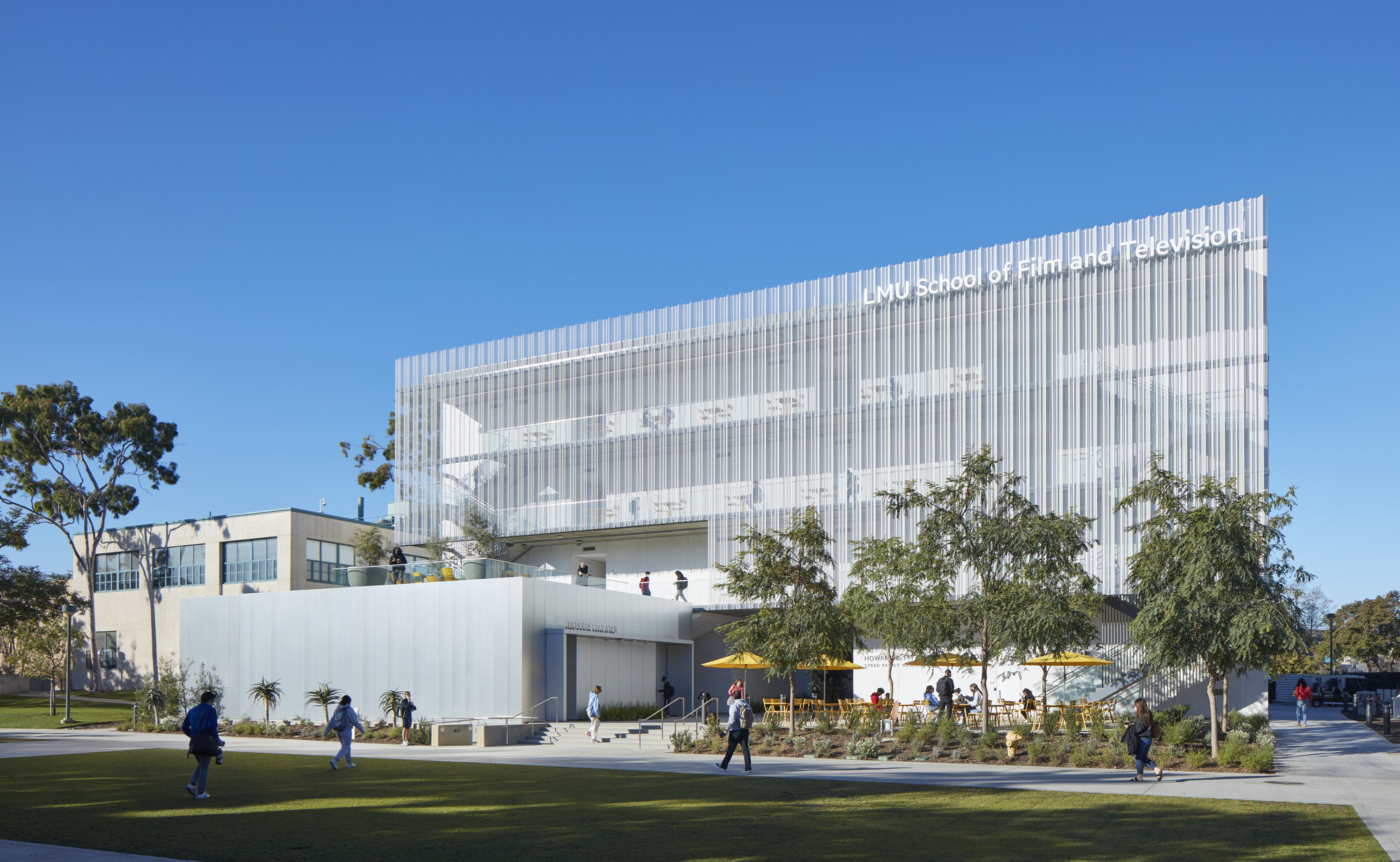California’s Loyola Marymount University (LMU) has completed two new buildings for arts and media education at its Westchester campus. Designed by Skidmore, Owings & Merrill (SOM), the Howard B. Fitzpatrick Pavilion is the new home of the undergraduate School of Film and Television, which is consistently ranked among the nation’s top 10 film schools. Also designed by SOM, the open-air Drollinger Family Stage is an outdoor lecture and performance space.
The four-story Fitzpatrick Pavilion features a semi-transparent brise soleil façade that shades outdoor spaces and seating while at the same time revealing the activity inside. The facility includes an 80-seat theater as well as open-air social spaces in the theater’s courtyard and on its rooftop. The Fitzpatrick Pavilion offers students 24-hour access to stop motion, film, and camera-directing studios, in addition to technology-rich post-production and animation labs.
Designed for the LMU College of Communication and Fine Arts, the Drollinger Family Stage is LMU’s first outdoor performance venue. The stage will host live theatrical and dance events, concerts, public lectures, and other engagements. The 1,600-sf stage can be fully enclosed or open on all sides.
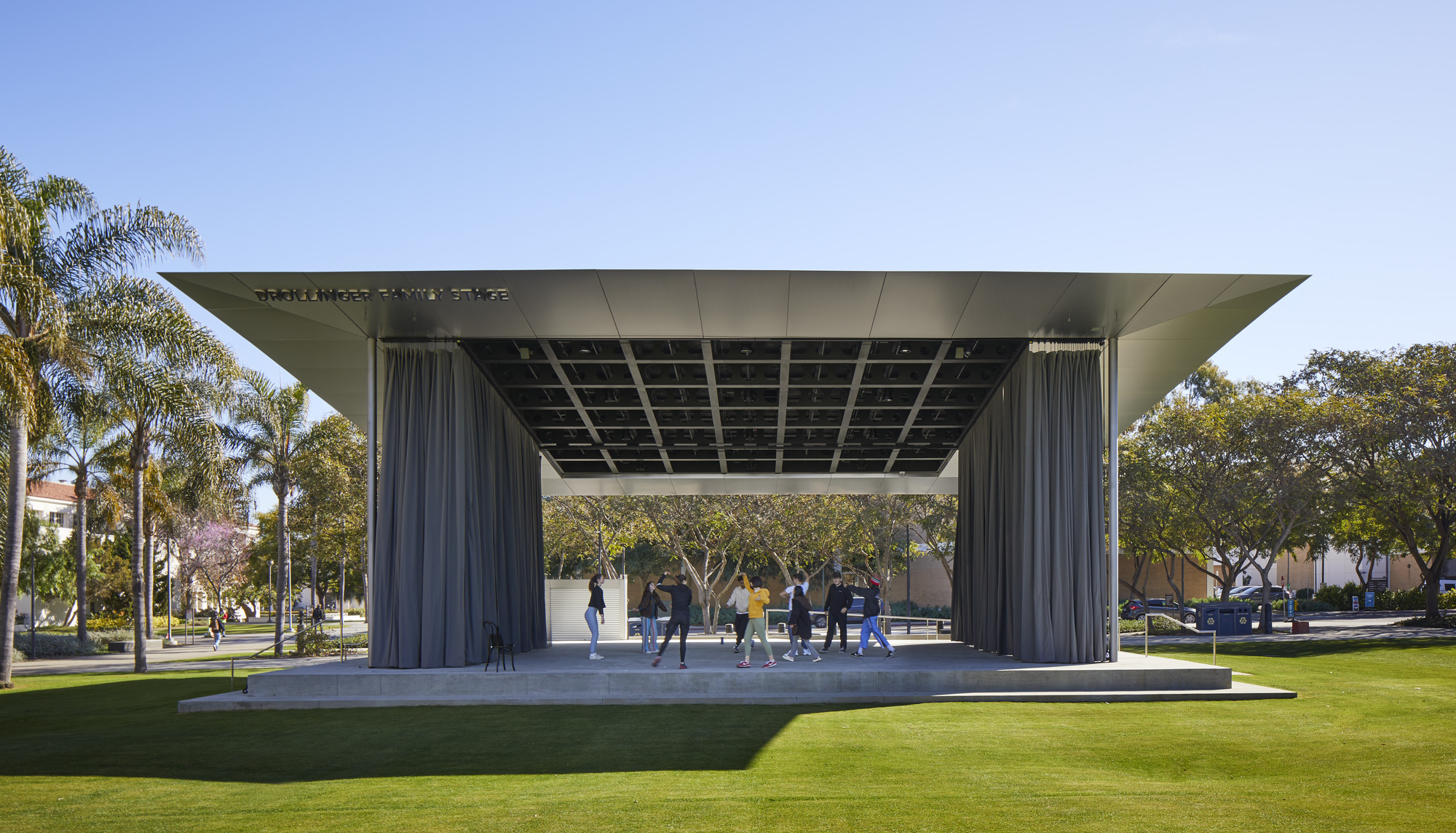
Previous SOM-designed facilities for LMU include an adaptive reuse project that provided administrative offices for LMU’s marketing, communications and university relations staff, and a new building for the Graduate School of Film and Television. Now underway, the renovation of LMU’s Strub Theatre will turn a traditional theater and dance stage into a flexible black box theater.
On the Building Team:
Architecture, interiors, structure, graphics: SOM
School of Film and Television consultants:
General contractor: WEO
Construction manager: AMA Project Management
Landscape: MIG
Civil engineering: KPFF
MEP: AMA Engineers
Lighting: HLB
Acoustics and audiovisual: Waveguide
Telecom/security: ITSDG
Drollinger Stage consultants:
General contractor: WEO
Civil engineering: KPFF
MEP: AMA Engineers
Lighting: HLB
Acoustics and audiovisual: Waveguide
Telecom a security: ITSDG
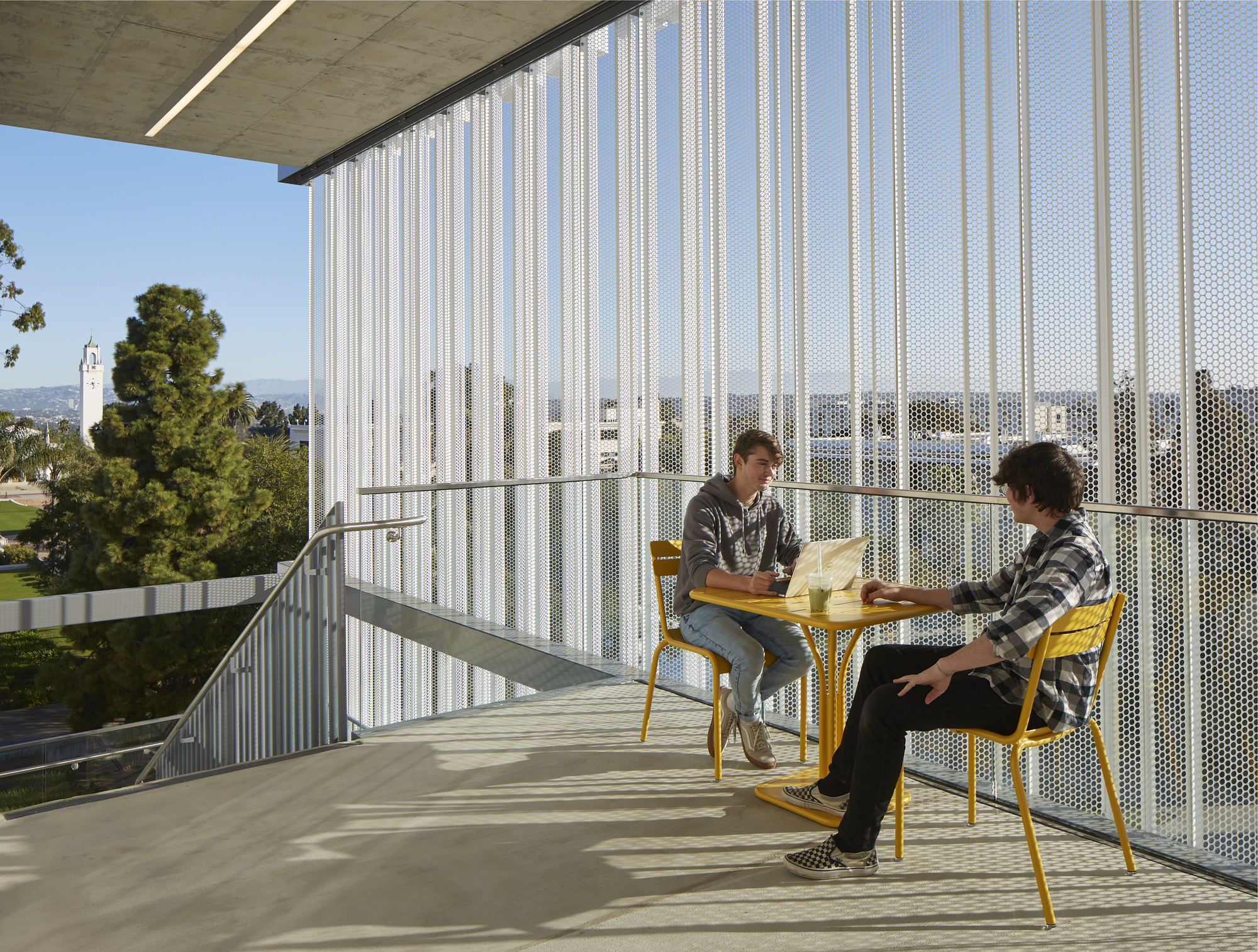


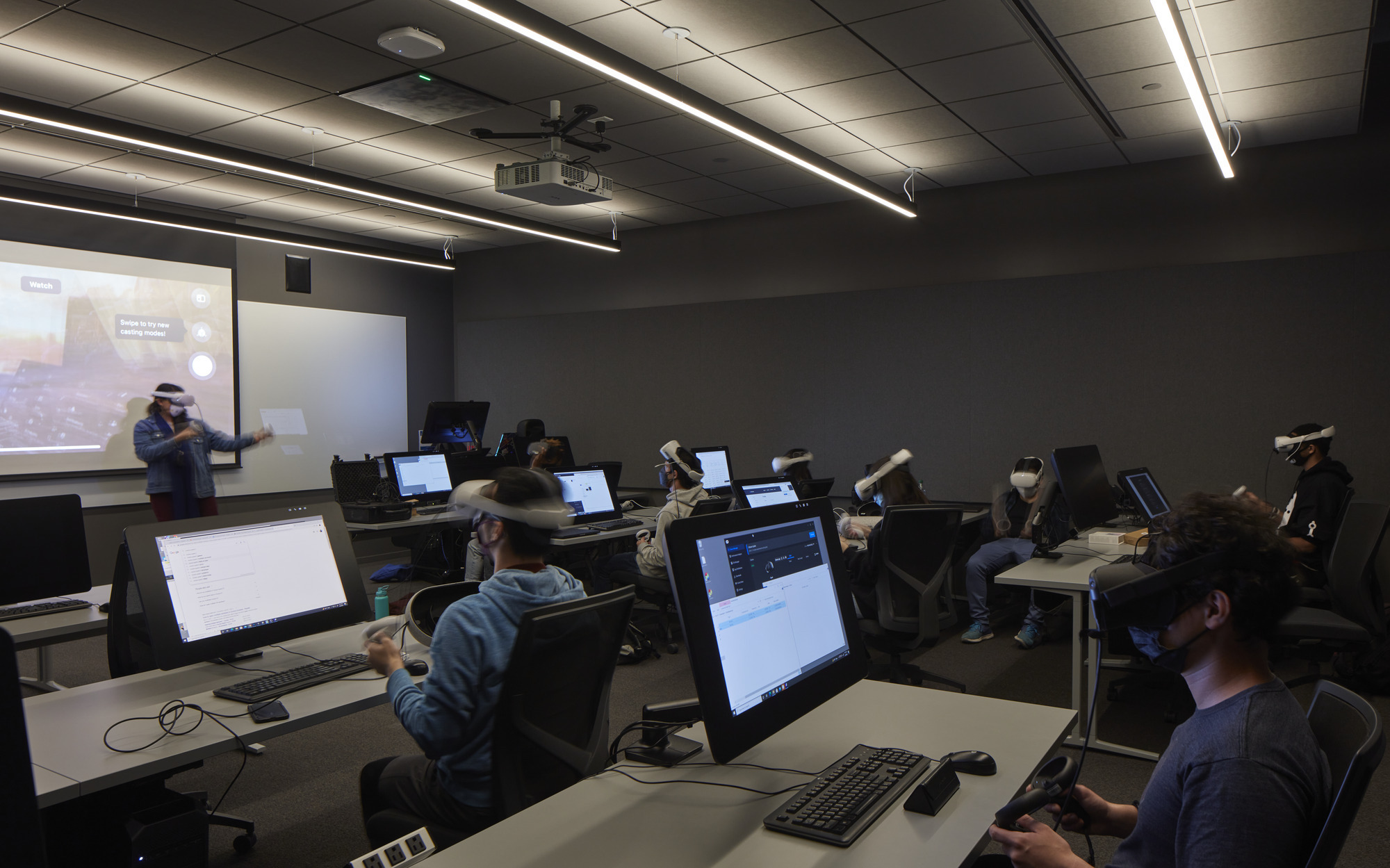
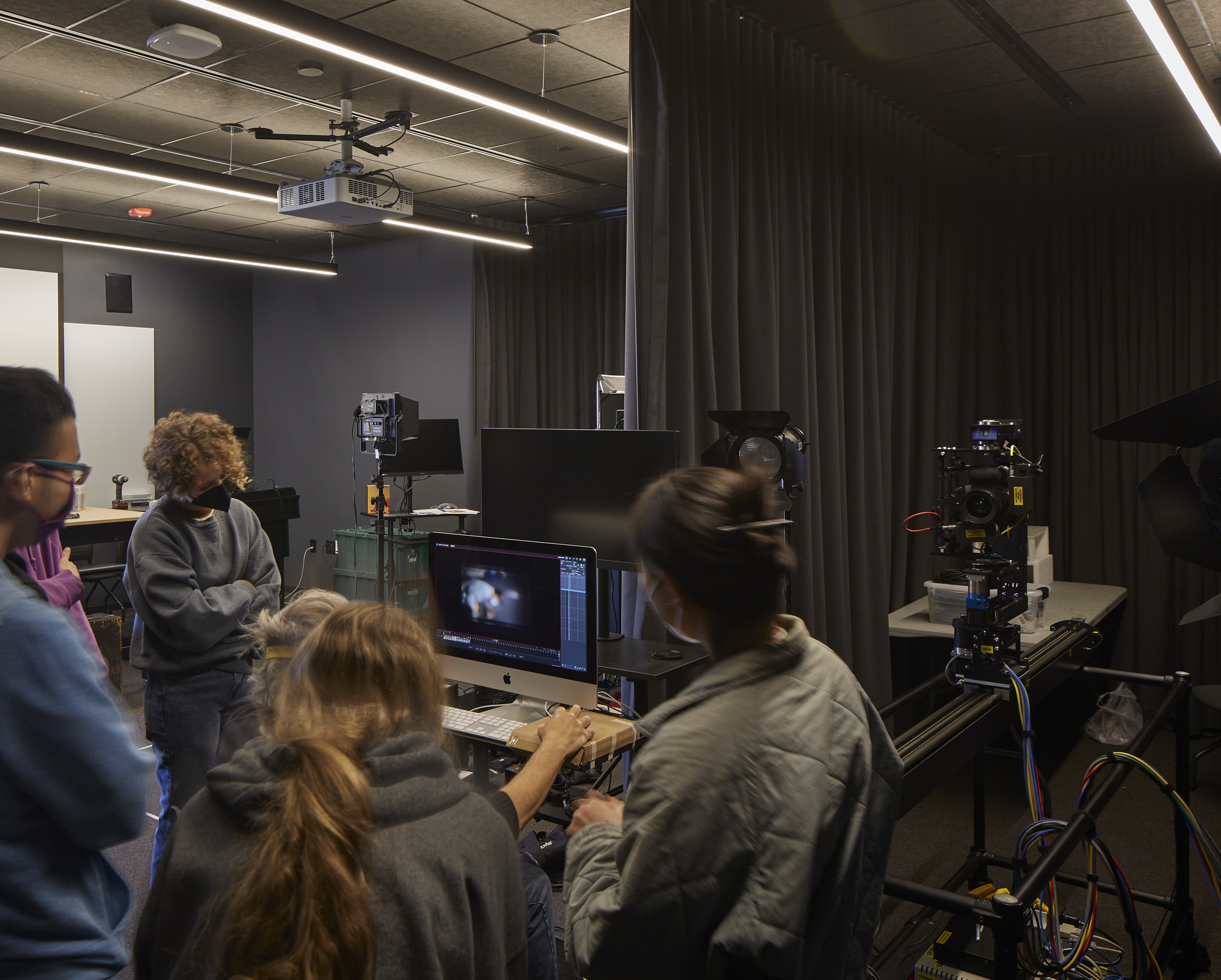
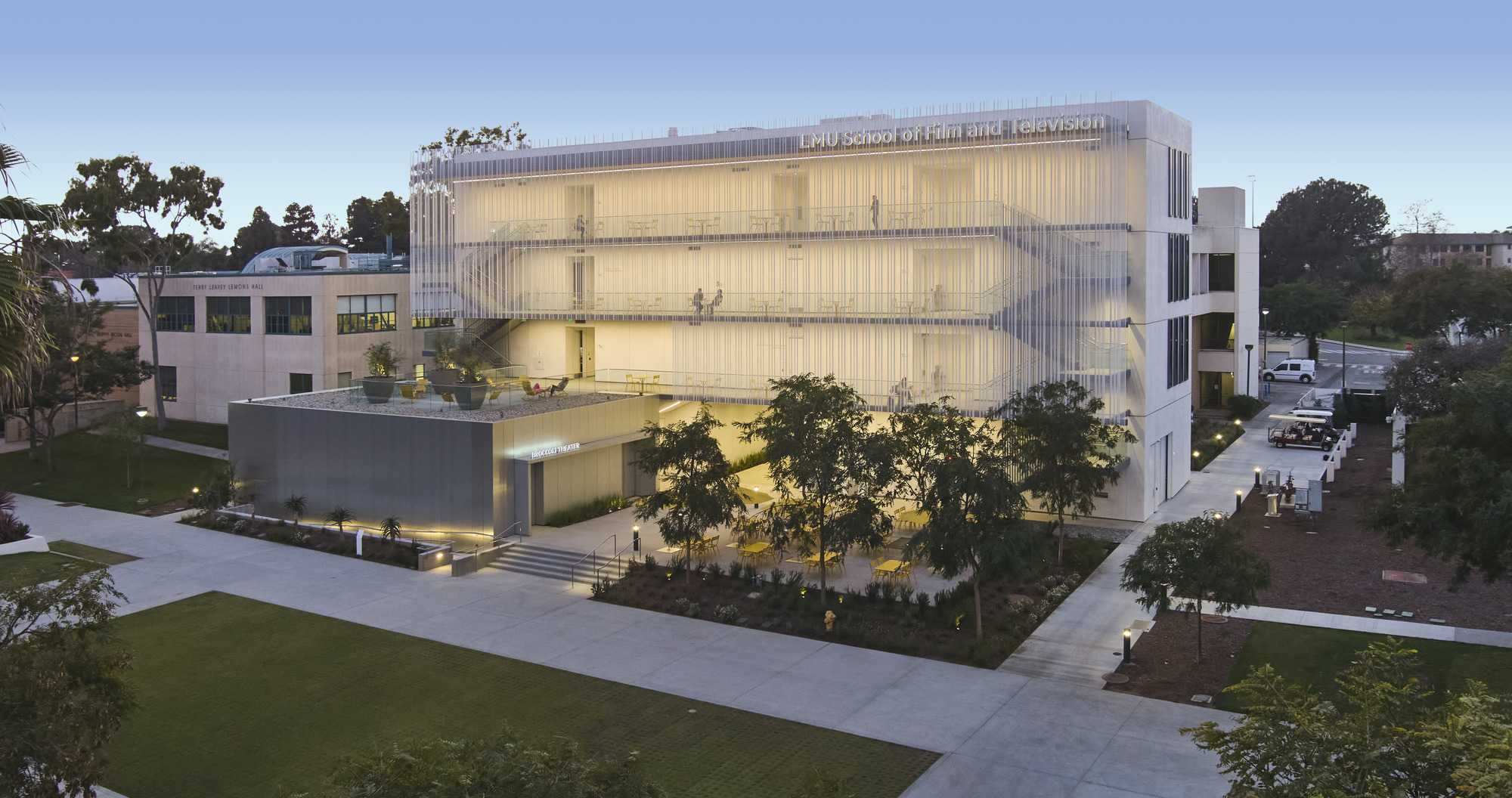

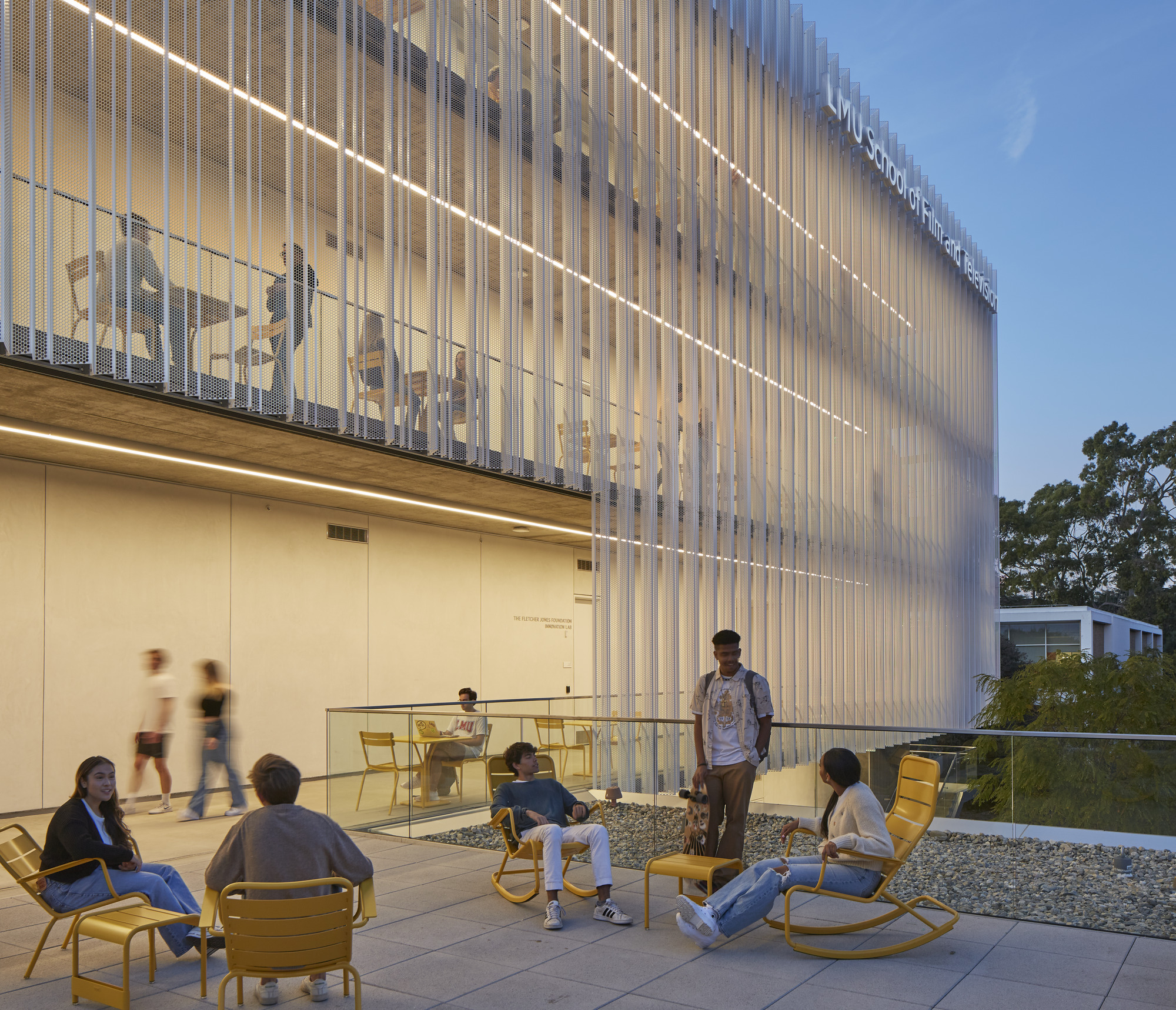
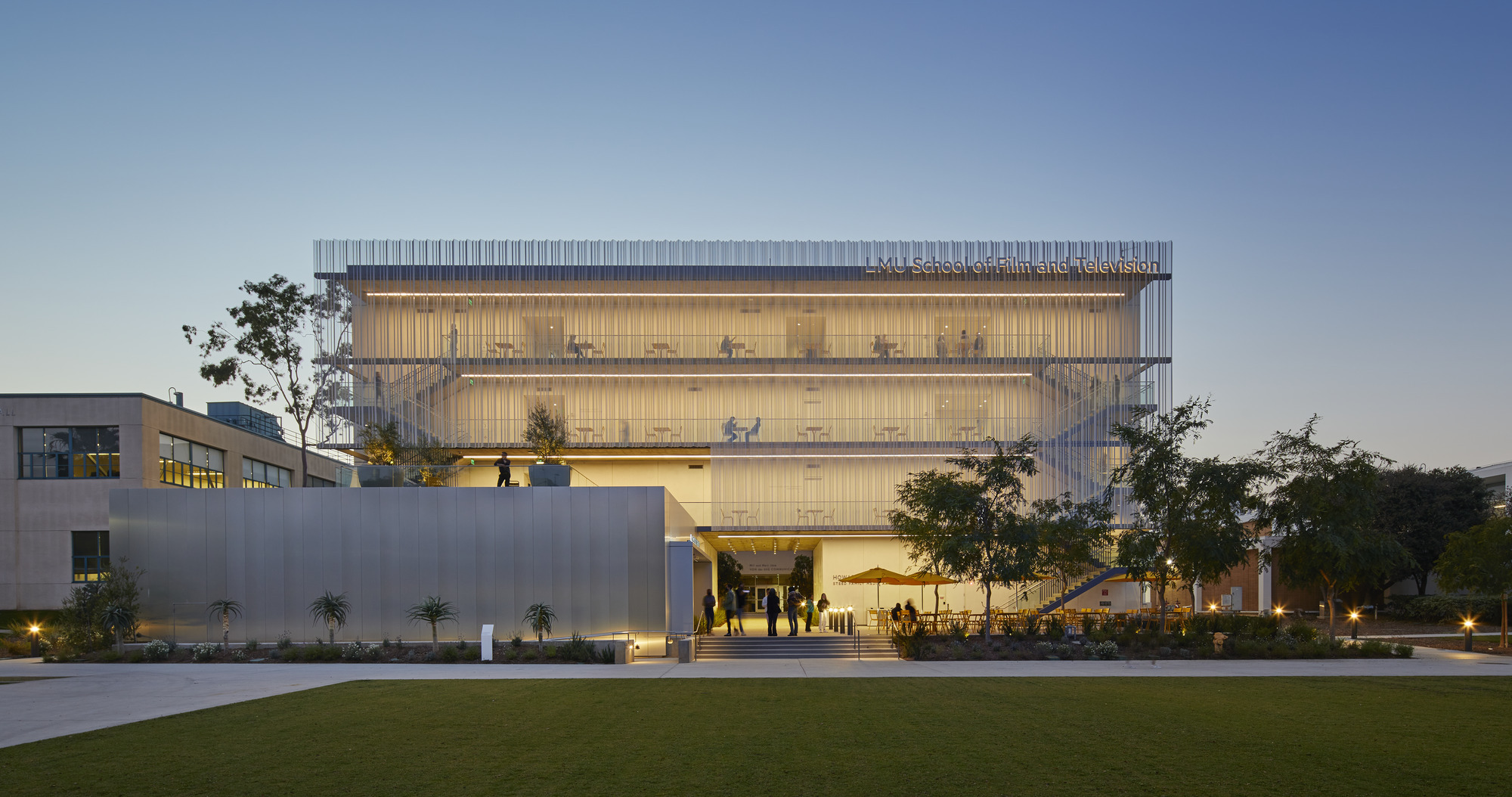
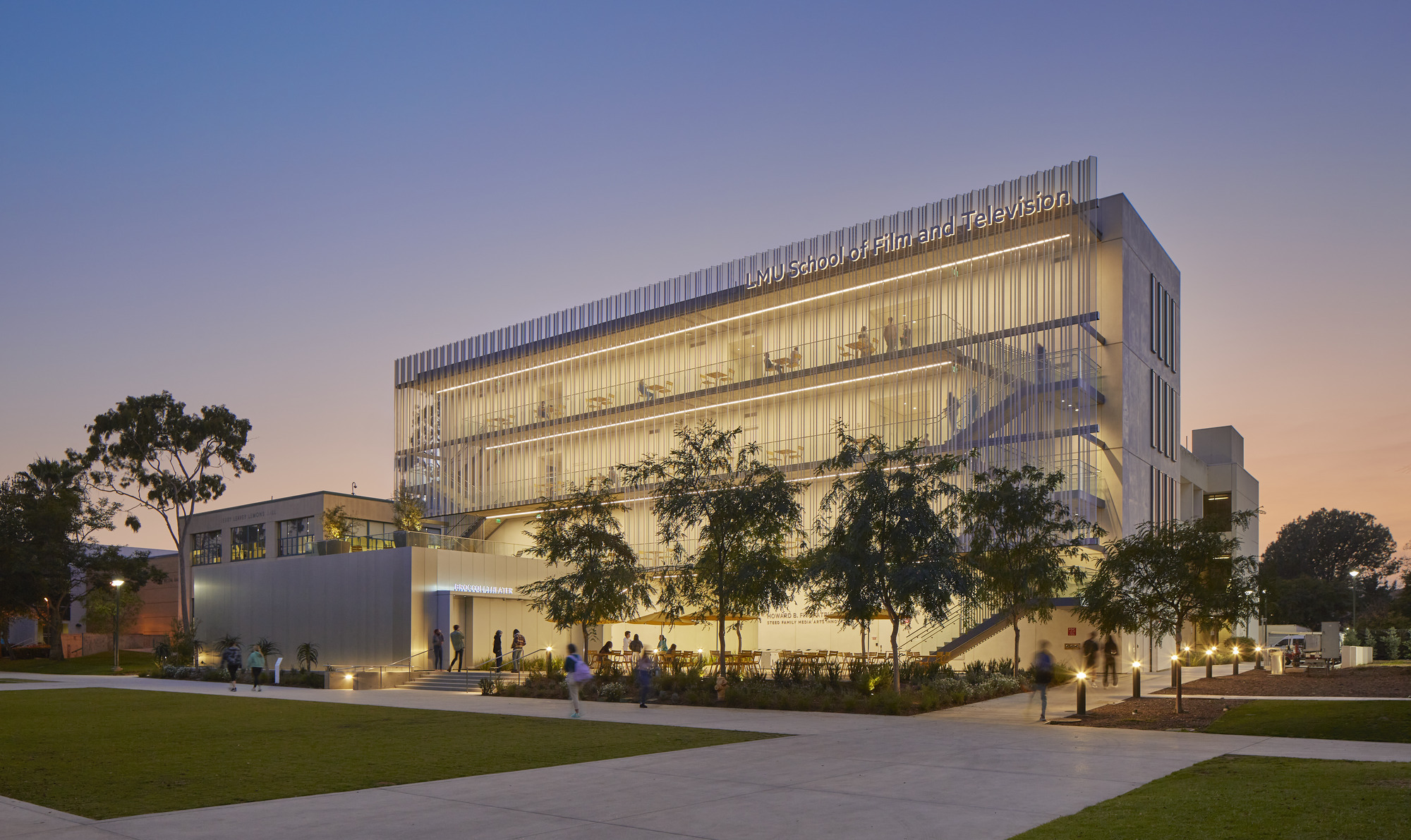
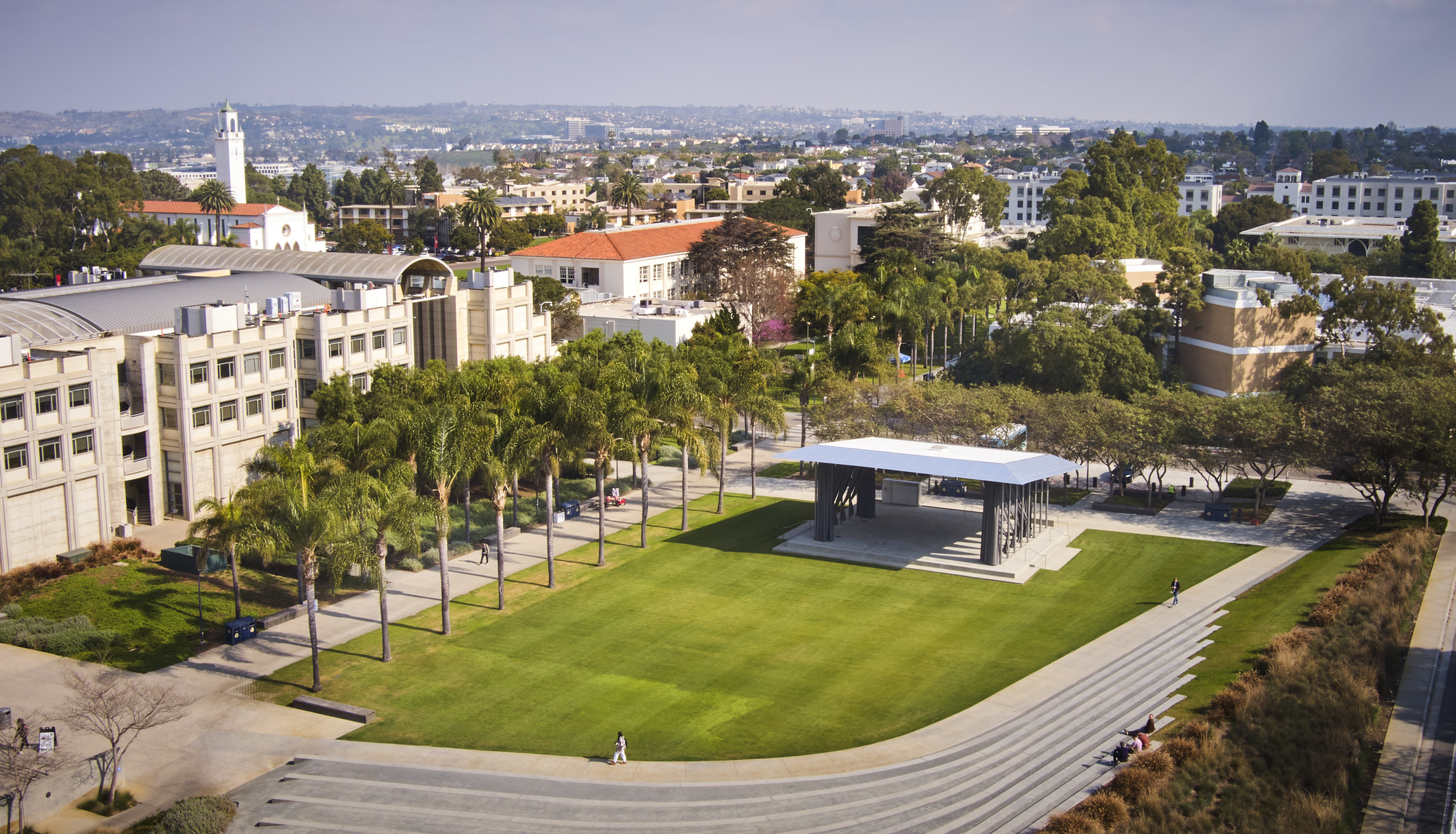
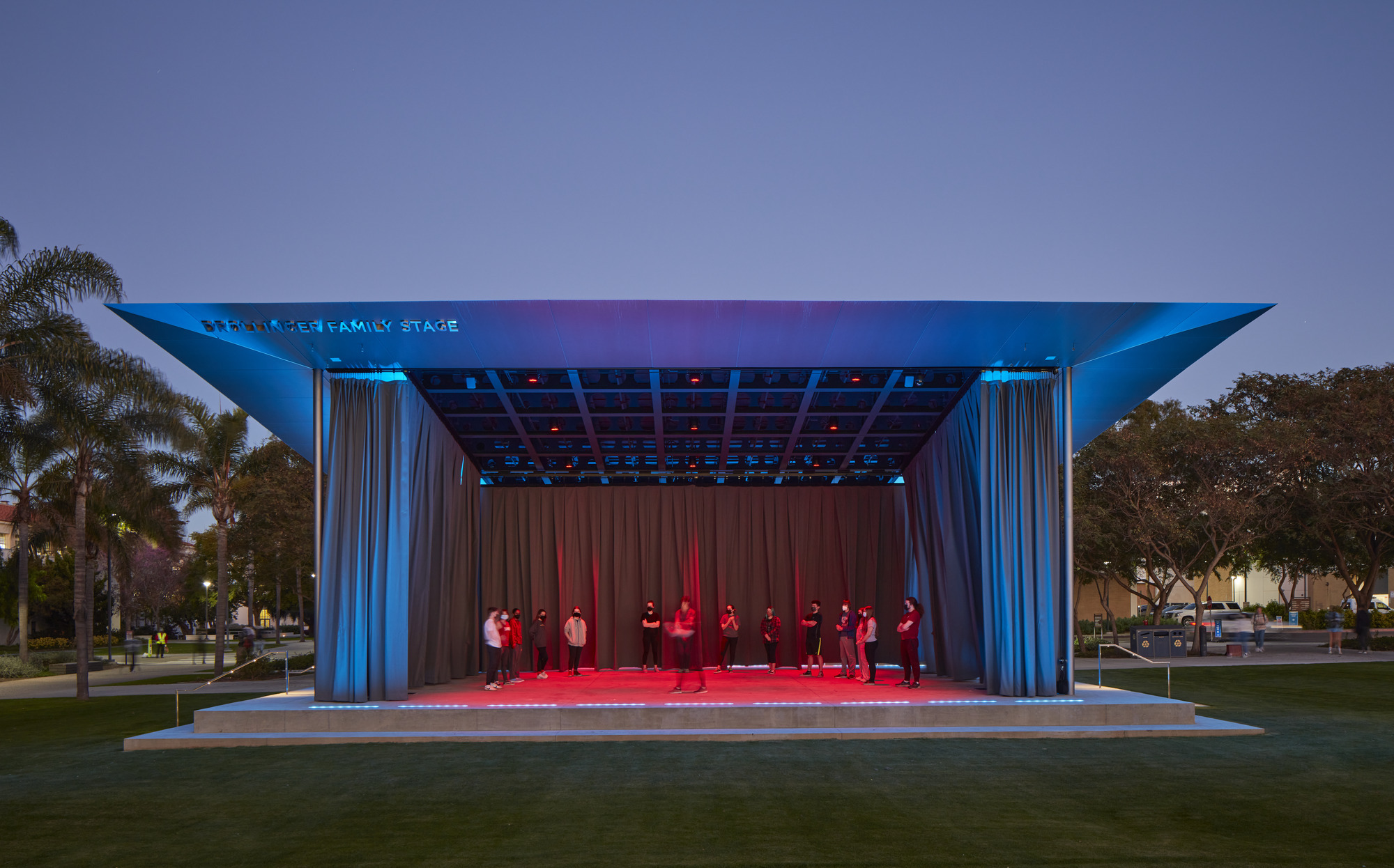
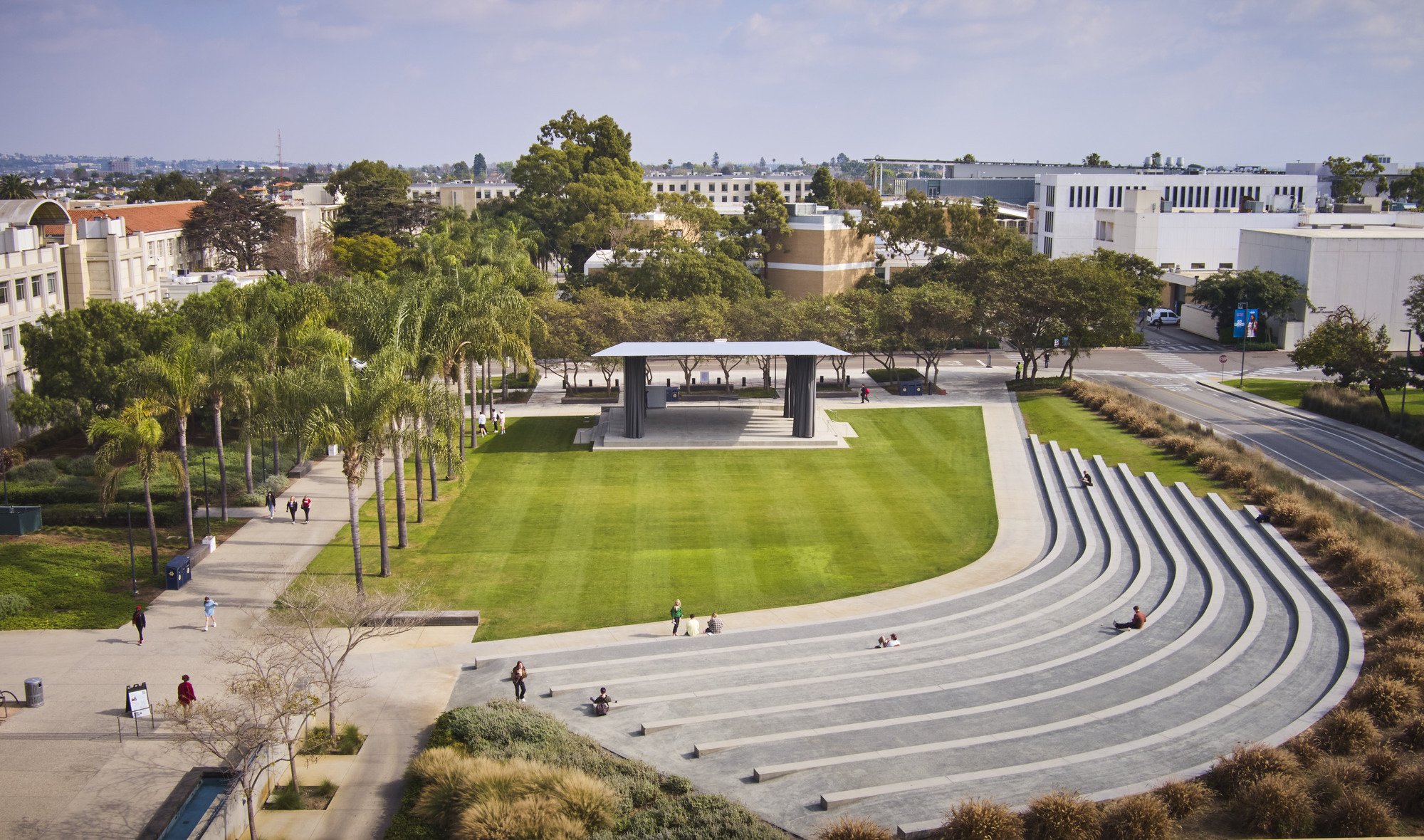
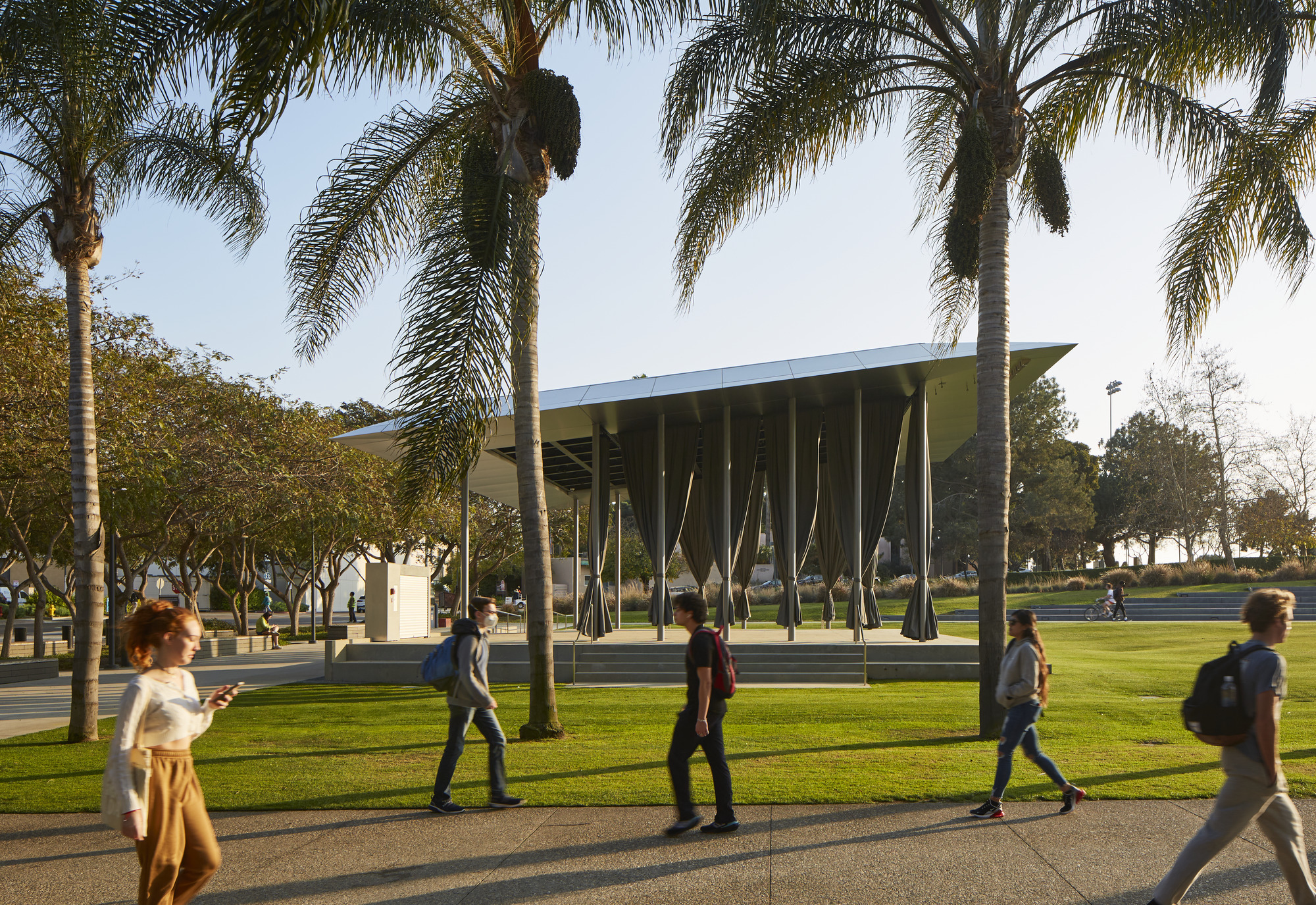
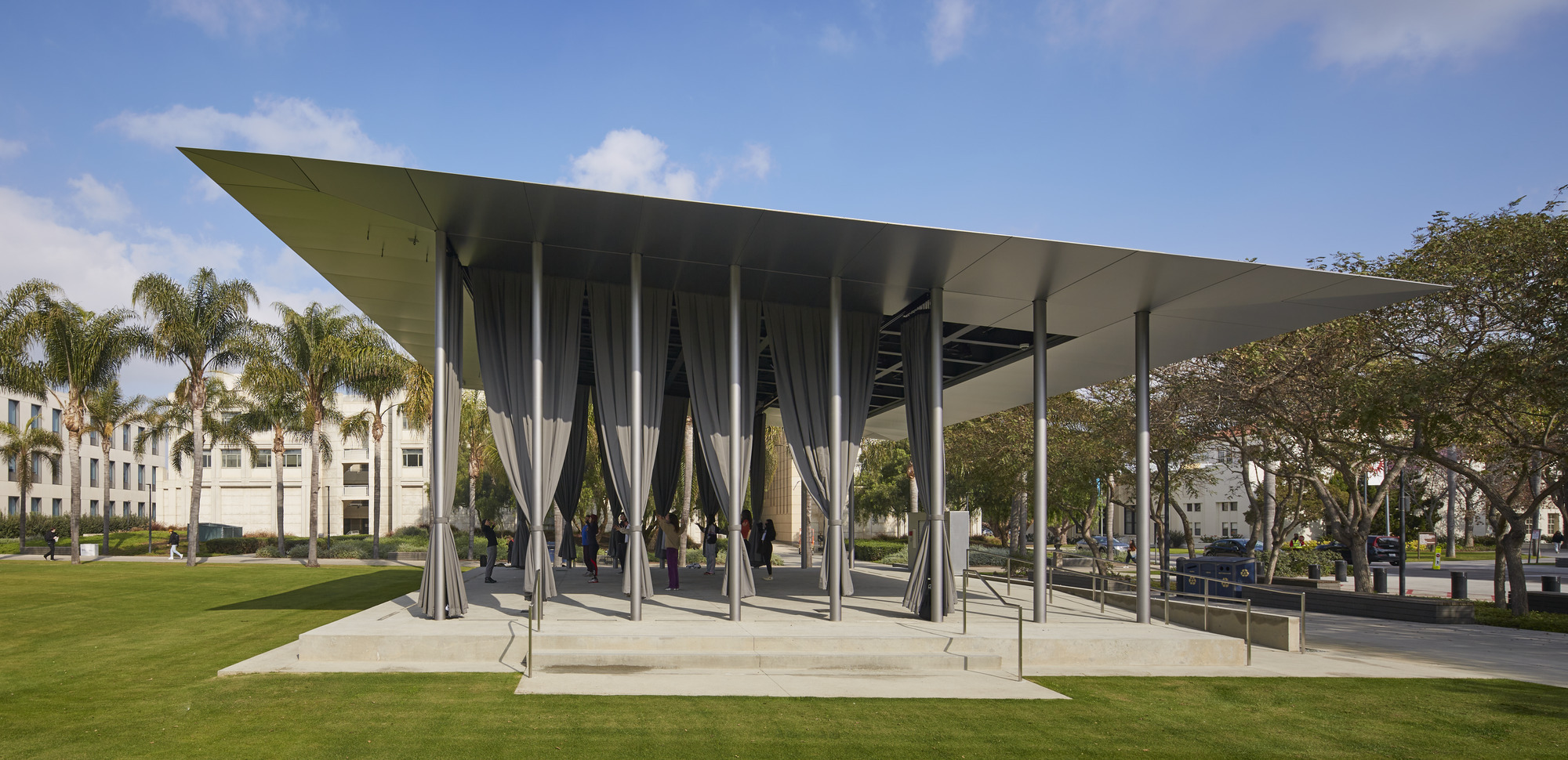
Related Stories
| Oct 17, 2011
Clery Act report reveals community colleges lacking integrated mass notification systems
“Detailed Analysis of U.S. College and University Annual Clery Act Reports” study now available.
| Oct 14, 2011
University of New Mexico Science & Math Learning Center attains LEED for Schools Gold
Van H. Gilbert architects enhances sustainability credentials.
| Oct 12, 2011
Bulley & Andrews celebrates 120 years of construction
The family-owned and operated general contractor attributes this significant milestone to the strong foundation built decades ago on honesty, integrity, and service in construction.
| Sep 30, 2011
Design your own floor program
Program allows users to choose from a variety of flooring and line accent colors to create unique floor designs to complement any athletic facility.
| Sep 23, 2011
Okanagan College sets sights on Living Buildings Challenge
The Living Building Challenge requires projects to meet a stringent list of qualifications, including net-zero energy and water consumption, and address critical environmental, social and economic factors.
| Sep 14, 2011
Research shows large gap in safety focus
82% of public, private and 2-year specialized colleges and universities believe they are not very effective at managing safe and secure openings or identities.
| Sep 7, 2011
KSS Architects wins AIA NJ design award
The project was one of three to win the award in the category of Architectural/Non-Residential.
| May 18, 2011
Major Trends in University Residence Halls
They’re not ‘dorms’ anymore. Today’s collegiate housing facilities are lively, state-of-the-art, and green—and a growing sector for Building Teams to explore.
| May 18, 2011
Raphael Viñoly’s serpentine-shaped building snakes up San Francisco hillside
The hillside location for the Ray and Dagmar Dolby Regeneration Medicine building at the University of California, San Francisco, presented a challenge to the Building Team of Raphael Viñoly, SmithGroup, DPR Construction, and Forell/Elsesser Engineers. The 660-foot-long serpentine-shaped building sits on a structural framework 40 to 70 feet off the ground to accommodate the hillside’s steep 60-degree slope.


